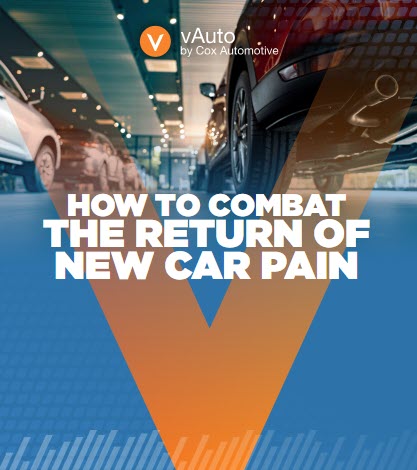3 Ways To Minimize Discounts And Improve Front-End Margins
If dealers compare their current front-end gross profit averages in new and used vehicles to similar data five years ago, you’d likely notice a troubling trend.
I’ve conducted this exercise with dealers recently as part of conversations about margin compression in automotive retail. In most cases, the analysis shows that front-end gross profits are pretty much what they used to be, if not even a little less, depending on a dealer’s franchise.
Likewise, the  analysis often shows that front-end gross profit averages haven’t grown in tandem with rising transaction prices, which continue to climb in new and used vehicles as the best-selling cars often carry more equipment and special features than their less-popular peers.
analysis often shows that front-end gross profit averages haven’t grown in tandem with rising transaction prices, which continue to climb in new and used vehicles as the best-selling cars often carry more equipment and special features than their less-popular peers.
The best dealers have come to terms with margin compression on two fronts in their new and used vehicle departments—their strategies for inventory management emphasize selling more units in less time to increase total dealership profitability through volume, and their processes for selling new and used vehicles aim to close common profit leaks that typically make the problem of margin compression only worse.
For this article, I’d like to focus on the second front. The following are three ways that dealers are changing their sales processes to eliminate lost profits that occur when their managers and sales associates discount asking prices and frequently give away more gross profit than they need to or should with customers.
1. Market-transparent pricing. This is the starting point for building confidence and credibility with today’s buyers. Thanks to their online research, customers know if your new or used vehicle price is decent and fair for the market. Dealers who align their pricing strategies to this higher level of customer price awareness find that their cars get more attention online, and retail in less time than dealers who have yet to fully embrace a transparency-minded pricing strategy.
2. A transparency-minded sales process. A growing number of dealers now start their in-store conversations with customers by explaining how and why they price their new and used vehicles to the market. This “documentation as negotiation” approach bucks traditional sales methods that steer price discussions to the final steps of the sale.
Herein lies a common disconnect: Dealers sometimes offer market-based pricing, but their in-store sales processes effectively pretend that the prices customers saw online don’t exist. Rather than diffuse a customer’s concerns about getting a fair price, this traditional approach often steels customers to negotiate—and sets up the fear among managers and sales associates that they’ll lose the customer unless they knock another $300 to $500 off the price.
Of course, a successful transparency-minded sales process needs careful oversight. This oversight should include measuring the discounts managers and sales associates offer on every new and used vehicle deal, and training them to avoid unnecessary give-aways of front-end margin. A benchmark: Dealers say they expect to see 70 percent to 80 percent of their new and used vehicle deals close at the asking price.
In addition, more dealers are now arming their managers with a “bottom price” for every new and used vehicle. That is, the managers know exactly how low they can go if necessary to complete a deal. As a Northeast Toyota dealer puts it, “my managers are really telling the truth now when they tell a customer, ‘this is it.’ The managers love it, and over time, they’ve gotten better at sticking close to our asking prices. In fact, I’m now planning to raise my ‘bottom price to help us increase our front-end averages even more.”
3. A pay plan that promotes transparency There are two hallmarks of the compensation plans dealers are now using as they work to minimize discounts and maximize front-end gross profits in new and used vehicles. First, dealers pay their teams on a per-unit, volume basis. Typically, the “real money” kicks in for sales associates after they sell 15 units, as the pay plans generally pay more per unit as sales associates sell more cars. Second, the pay plans include bonuses that reward managers and sales associates when they close more deals at the asking price—an incentive to stand behind the market-based pricing that attracted customers to a new or used vehicle in the first place.
Taken together, these efforts have helped dealers increase their average front-end margins in new and used vehicles by as much as $500 per car. In addition, these dealers see another benefit: Their customers like the experience, and they tell their friends.
The post 3 Ways To Minimize Discounts And Improve Front-End Margins appeared first on Dale Pollak.








